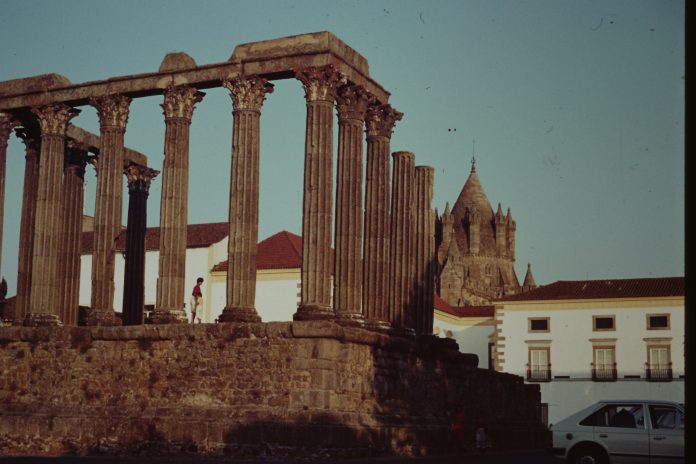Also known as the Temple of Diana, the Roman Temple of Évora dates back to the 1st century AD and is one of the most unique pieces of history in Portugal. Whether you’re a history buff or an architecture lover, this temple is a must-see if you are in the Alentejo region. Let’s take a look at the history behind the Roman Temple of Évora, its architecture, and what you can expect when visiting.
History
The Roman Temple of Évora represents the lasting influence of the Roman Empire. Built around the 1st century AD when Évora was called Liberalitas Julia, this temple, also known as the Temple of Diana, is a tribute to the Roman goddess Diana, linked to hunting and fertility.
During the reign of Emperor Augustus, the temple played an important role in the Roman forum, where people gathered for religious and civic events. As time passed and the Roman Empire declined, the temple suffered neglect and went through changes, including being turned into a Christian church during the Middle Ages.
In the 19th century, the temple’s historical significance was recognized, leading to restoration efforts aimed at preserving its remarkable architecture and history. Today, the Roman Temple of Évora is a UNESCO World Heritage Site.
Architecture
The Roman Temple of Évora is a remarkable example of Roman architecture and engineering. It was built in the Corinthian style and is one of the best-preserved Roman structures in the region.
The temple had an original design with six columns at the front and back, and fourteen columns on the sides. These columns, made of granite, were over 8 meters tall and had beautiful Corinthian capitals decorated with acanthus leaves and scrolls.
The temple’s foundation was constructed using a Roman building technique called opus caementicium. This method involved mixing lime, water, and aggregate to create a strong and durable foundation. The massive stone blocks were carefully assembled, creating a sturdy structure that has survived over time.
While the temple’s pediment and roof are no longer intact, you can still appreciate its grand architecture. The remaining columns and entablature exhibit the classical proportions and meticulous craftsmanship that characterized Roman architecture.
Visiting Times & Tickets
The temple is open 24/7 rain or shine as it is an outdoor sight that is always open to the public. It is free to enter as there are no tickets available. It is literally located wide in the open in the middle of Évora.


